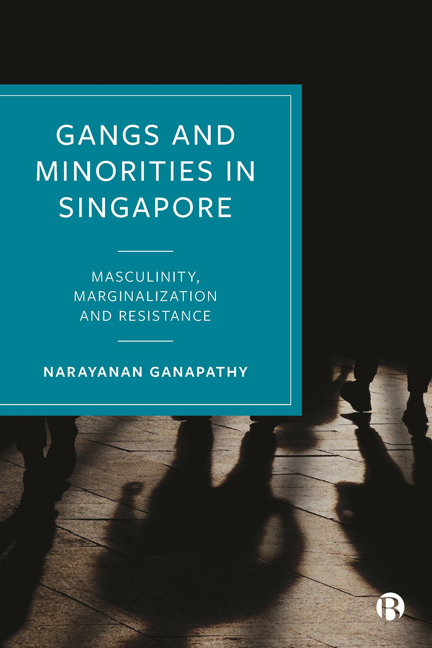Book contents
- Frontmatter
- Contents
- List of Figures
- List of Abbreviations
- Glossary of Non-English Terms
- About the Author
- Preface
- 1 Introduction: Framing the Study
- 2 Omega as Organized Crime?
- 3 Racial Minorities and Crime
- 4 Methods of Study
- 5 The Rise of Omega
- 6 Fearless and Fearsome
- 7 The Omega Wave: The ‘Triadization’ of Omega
- 8 Conclusion: Law, Drug Crimes and Marginality
- Notes
- References
- Index
4 - Methods of Study
Published online by Cambridge University Press: 28 March 2024
- Frontmatter
- Contents
- List of Figures
- List of Abbreviations
- Glossary of Non-English Terms
- About the Author
- Preface
- 1 Introduction: Framing the Study
- 2 Omega as Organized Crime?
- 3 Racial Minorities and Crime
- 4 Methods of Study
- 5 The Rise of Omega
- 6 Fearless and Fearsome
- 7 The Omega Wave: The ‘Triadization’ of Omega
- 8 Conclusion: Law, Drug Crimes and Marginality
- Notes
- References
- Index
Summary
The ethnographic tradition
In a major statement on criminological theories and approaches, Decker and Pyrooz (2013: 274) declare that ‘no substantive area in criminology is as closely tied to a methodology as gangs are to ethnography’, highlighting the emergence and persistence of the ethnographic study of gangs (Puffer, 1912; Thrasher, 1927; Whyte, 1943; Cohen, 1955; Miller, 1958; Cloward and Ohlin, 1960; Yablonsky, 1962; Short and Strodtbeck, 1965; Moore, 1978, 1991; Hagedorn, 1988; Vigil,1988; Decker and van Winkle, 1996). The early scholars exploring gangs and ethnography examined how race and ethnicity factored into the establishment of gangs, and also how migration, socioeconomic dynamics and an urban environment impacted on the way they organized and functioned. Insights into the interplay of such factors provided valuable understandings of other linked elements, such as marginalization, cultural background, societal organization and class, and the salience of these factors. Decker and Pyrooz (2013: 275) cite two examples: Lewis’ (1912) early ethnographic study of gangs documented how social exclusion produced by ethnic bias and economic discrimination led to further marginalization of new immigrant youths; and Puffer’s (1912) study on the treatment of gangs in Boston explored the challenges of integration of new immigrant groups, highlighting concepts of migration and discrimination.
The role of culture, cultural diversity, discrimination, and conflict in defining gang beliefs and values has been another key theme in early ethnographic studies. Both Thrasher’s (1927) and Whyte’s (1943) research in this area attested to the importance of culture. In The Gang: A Study of 1,313 Gangs in Chicago, Thrasher found Chicago gangs developing in areas that had seen huge shifts in their ethnic composition, resulting in unprecedented ethnic and racial diversity and social mobility, as well a loss of structure in neighbourhoods. Whyte’s work focused more on social exclusion and cultural isolation, specifically looking at how this affected socialization patterns and practices among Italian ‘corner boys’. Cultural and ethnic diversity means following values and practices that are often in conflict with mainstream society, which naturally leads to antagonism and a sense of alienation. In essence, ethnic culture can cause isolation from the mainstream. As Whyte discovered in his fieldwork, this isolation from the mainstream translates to not being able to access opportunities and institutions that assist in integration and assimilation, leading to further marginalization despite living in mainstream society.
- Type
- Chapter
- Information
- Gangs and Minorities in SingaporeMasculinity, Marginalization and Resistance, pp. 60 - 80Publisher: Bristol University PressPrint publication year: 2023



